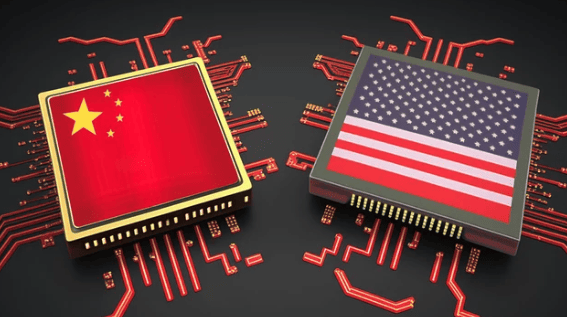The New Global Supply Chain: The Domino Effect of Geopolitical Tensions between China and the United States

With geopolitical tensions between the United States and China drastically increasing in the past year, global supply chains have shifted. Companies around the world are forced to diversify their supply chains to mitigate disruptions, reduce risk, and increase supply continuity. Here’s how we got here, where things currently stand, and how companies can move forward.
In the past year, geopolitical tensions between the United States and China have drastically increased, totally shifting global supply chains and how they have been operating for the past decade.
The interest in diversifying options for sourcing parts and materials outside of China has grown significantly; however, the United States and other countries are not yet equipped to pick up the capacity.
This new manufacturing reality is forcing companies around the world to diversify their supply chains to mitigate disruptions, reduce risk, and increase supply continuity. With geopolitical issues at the root of the problem, we’re experiencing a domino effect on our supply chains.
Below I outline how we got here, where things currently stand, and how companies can best move forward.
United States and China Geopolitical Issues Intensify
In the past few years, friction between the United States and China has risen. We’ve watched tensions flare as China refused to condemn Russia for the war and humanitarian crisis in Ukraine, and China conducted live-fire drills following the U.S. House Speaker visit to Taiwan in August 2022.
The United States then introduced strict restrictions on exports of U.S.-made chips, followed by President Biden’s first official meeting with China’s leader Xi Jinping taking place in November 2022.
In early September 2023, U.S. Commerce Secretary Gina Raimondo met with Chinese officials to strengthen U.S .business relations with Beijing while also imposing some of the toughest Chinese trade restrictions in years.
Citing national security as the reason behind the export control, Raimondo reinforced that the United States will not be selling sophisticated chips to China for China’s military use. Despite a positive outlook from this meeting, companies know that tensions are still high, and overreliance on China creates concentrated risk while its own economy is struggling and exports continue to drop.
The Rise of Artificial Intelligence and Chip Shortages
On top of concerns regarding business in China, we’re currently seeing a new surge in the need for computer chips, which U.S. companies have traditionally sourced from China.
Popular tools like ChatGPT call for high-powered graphics processing units (GPUs) to deploy and integrate advanced generative AI models. However, few U.S. companies manufacture GPUs, and leading providers like NVIDIA are working hard to keep up with the current demand and avoid another chip shortage that has the potential to hinder AI innovation and progress.
By investing in chip manufacturing and requiring federally funded infrastructure to source materials and products from the United States, the United States is taking a positive step in securing its vulnerable chip supply chain. However, this does not mean we’re prepared for a full shift to all manufacturing being “made in America.”
U.S. Manufacturing Labor Gap
It has become clear the United States does not yet have the labor and talent necessary to drastically expand our manufacturing capabilities. Just take the Taiwan Semiconductor Manufacturing Co. (TSMC) as an example.
The company announced at the end of 2022 that it would be opening a new factory in Arizona. Come August of 2023 TSMC delayed opening due to a shortage of skilled U.S. workers and is now looking to obtain visas for as many as 500 Taiwanese workers to fill the talent gaps.
The clear manufacturing and labor gap in the United States is forcing companies to shift their supplier base elsewhere.
A new report presented at the Federal Reserve Bank of Kansas City’s annual conference in August shows a decrease in U.S. imports from China with a corresponding increase in U.S. imports from Vietnam and Mexico between 2017 and 2022.
At the same time to reduce the impact of these changes, Chinese firms have increased their exports and foreign investments in areas like Vietnam and Mexico as well. With this new dynamic, it’s clear Chinese and American supply chains will always be intertwined in some capacity.
Operating within the New Global Supply Chain
The end goal for companies shouldn’t be to avoid business with China altogether but rather to diversify their supplier base to increase resilience. The pandemic shed light on the severe concentration risk the United States was facing by over-relying on China for most goods, services, parts, and raw materials.
The heightened geopolitical risks between the United States and China right now are only encouraging companies to de-risk their supply chain footprint and source from around the world if they haven’t already.
To make this transition, companies need to empower their supply chain and procurement teams with the proper tools powered by advanced technology. Too many teams still rely on outdated, time-consuming manual processes in spreadsheets or traditional tools when it comes to managing supply dynamics, leading to a lack of visibility throughout their supply chains.
By utilizing the advanced technologies available today with AI and automation to contextualize data and operate in real time, procurement teams gain insights to make better, smarter decisions regarding who and where they source from at scale.
While we can’t predict how geopolitical tensions will continue to develop in the immediate or distant future, companies can boost their resiliency and diversify their supply base to ensure they are prepared to navigate any disruptions and maintain a competitive edge.

